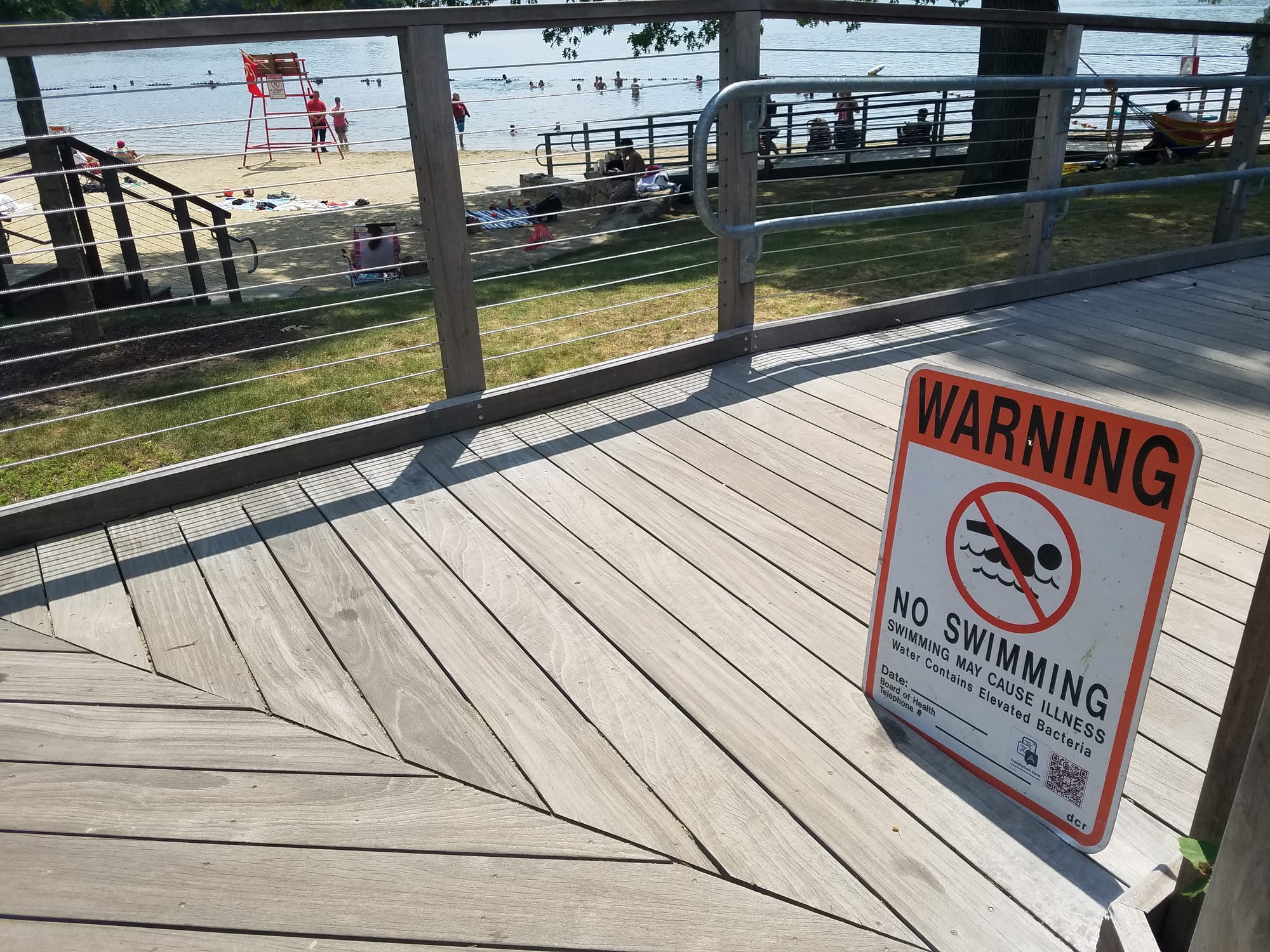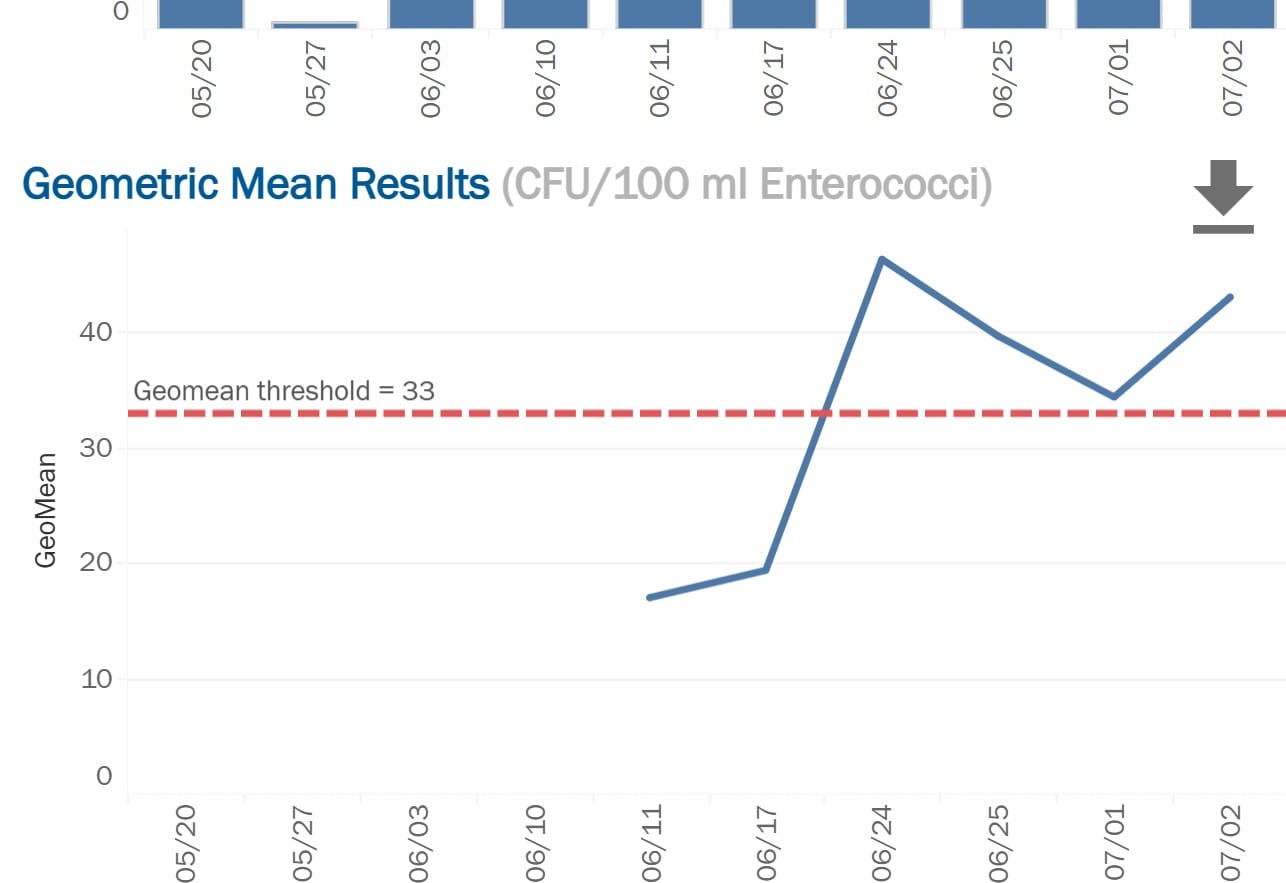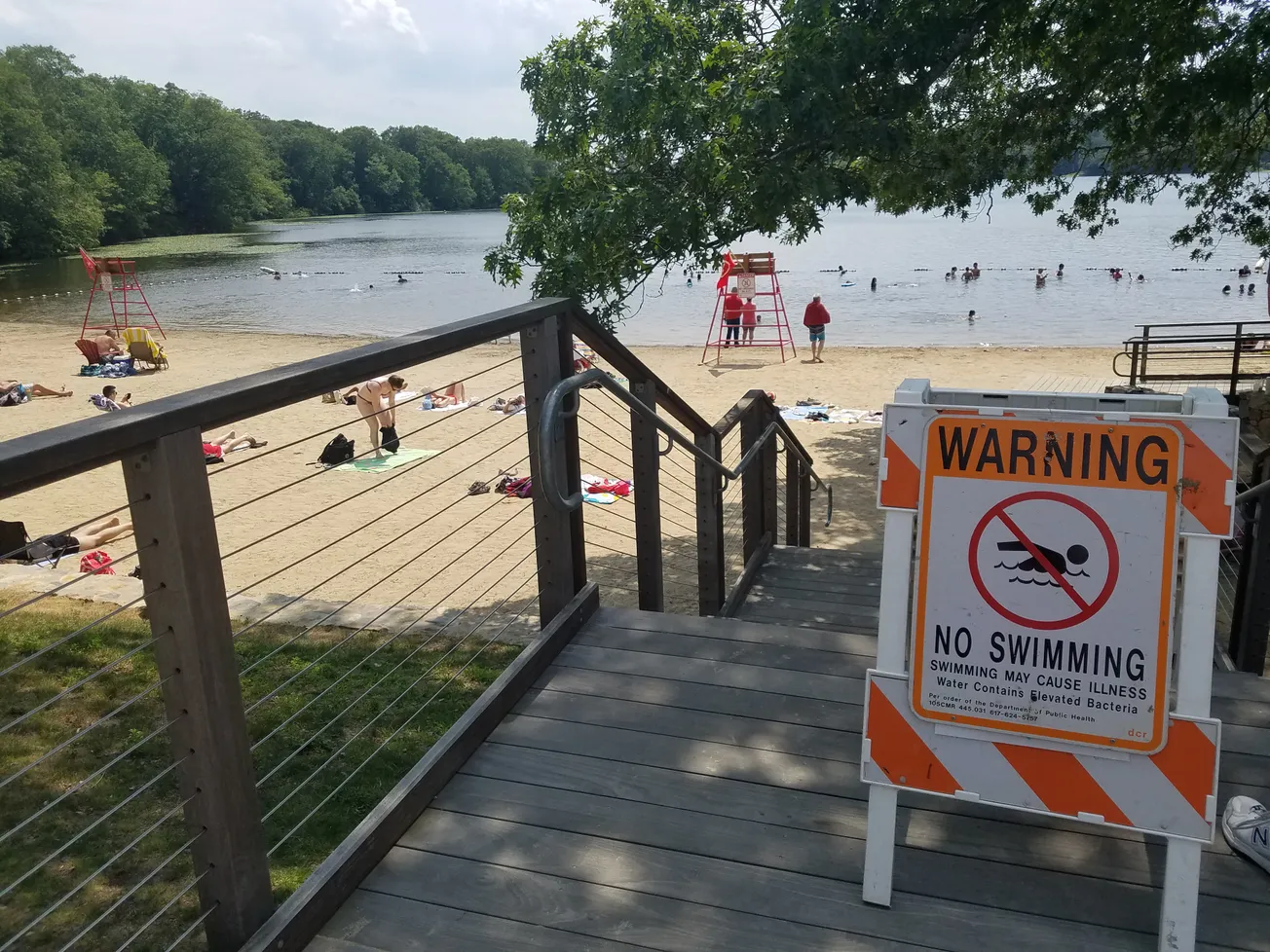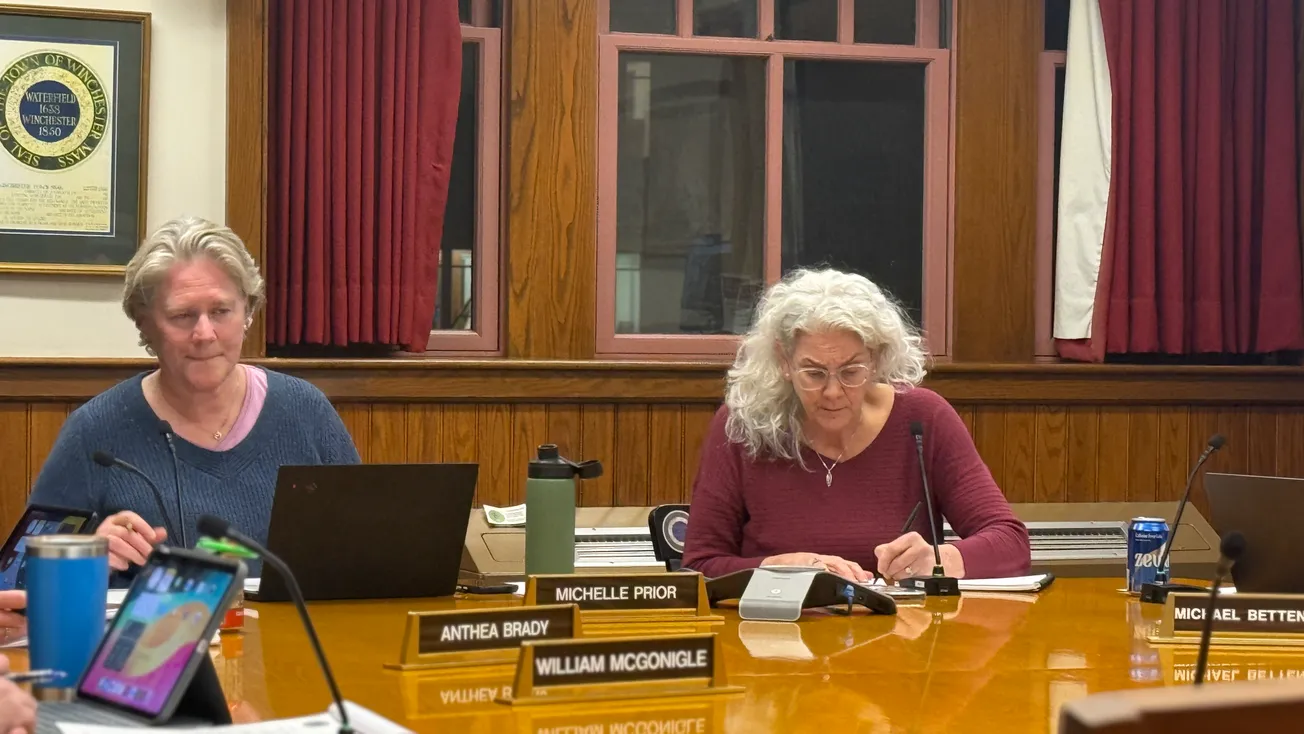Table of Contents
Temperatures have been hot this summer, with Bay State residents already surviving one heatwave with excessive temperatures.
Residents lucky enough to have outlets in their backyards, such as Shannon Beach in Winchester, have taken to those recreational facilities to cool off.
But the Department of Public Health has shut down about 17 beaches statewide, including Shannon Beach due to high levels of bacteria caused by stormwater runoff, fecal contamination or other sources.

Shannon Beach was also closed last summer for the same reasons, but swimmers continued to use the facilities despite posted signs. Those signs were back before the Fourth of July weekend and remain in place.
Anyone swimming at Shannon Beach does so at their own risk.
You can check out the DPH Interactive Beach Water Quality Dashboard, which “provides water quality testing results for the current beach season. It will tell you which beaches are open or closed. If a beach is closed, do not swim or enter the water at that location to avoid risk of illness.”
Testing for bacteria
The DPH tests more than 1,100 public and semi-public beaches statewide for bacteria before they are allowed to open.
“In the United States, most swim-related illnesses are associated with disease-causing organisms (pathogens) that are linked to fecal contamination,” the DPW website says of why beaches are tested. “To protect public health, the Massachusetts Department of Public Health (MDPH) requires that certain ‘indicator organisms,’ or specific microscopic bacteria that indicate harmful pathogens may be present. This monitoring data helps local health officials determine when to close a beach due to unsafe conditions and to notify the public so that beach visitors can make informed decisions about swimming at the beach.”

The DPH defines “indicator organisms” as those that “share similar characteristics and life cycles as pathogens, disease-causing organisms that can make humans sick,” including pathogens associated with fecal contamination.
“The bacteria used as indicator organisms to test the waters at beaches are Enterococci and E. coli,” the site says. “Marine beaches are tested for the presence of Enterococci. Freshwater beaches are tested either for the presence of E. coli or Enterococci.”
Bacteria in the water
Local health departments as well as the state Department of Conservation and Recreation collect the majority of water samples in Massachusetts. Samples are collected in 3 feet of water at a depth of 12 inches below the surface water and are typically collected anywhere from daily to monthly.
A majority of beaches are tested once a week, but the DCR reports frequency depends on whether or not a beach has water quality issues.

Testing is done at accredited labs and take about 24 hours to perform. If E. coli levels exceed the limits set for beaches, the water is re-tested. If two tests fail, beaches are considered unsafe for swimming.
Beaches can remain closed until test results show the bacteria levels are back to within acceptable ranges for swimming safety.
So where does all this bacteria come from?
Both the DPH and DCR state that bacteria in the water can come from a variety of sources, including the following:
• Stormwater (rain) run-off
• Failing or malfunctioning septic systems
• Combined and sanitary sewer overflows
• Leaking sewer pipes
• Illegal sewer hookups
• Wildlife and pet waste
• Agricultural runoff

If you don’t feel well
State health officials say anyone exposed to contaminated water can experience the following symptoms:
• Gastrointestinal symptoms — nausea, vomiting, diarrhea, and abdominal pain
• Respiratory symptoms — sore throat, cough, runny nose, and sneezing
• Dermatological symptoms — skin rash and itching
• Eye and ear symptoms — irritation, earache, itching
• Flu-like symptoms — fever and chills
Although most symptoms are minor, more serious illness can occur.
“Children, the elderly, and those with weakened immune systems are at greater risk for illness,” the DPH says.
The DPH goes on to recommend that anyone swimming at a beach that has been closed to swimmers and feels ill after, should see a medical professional.







